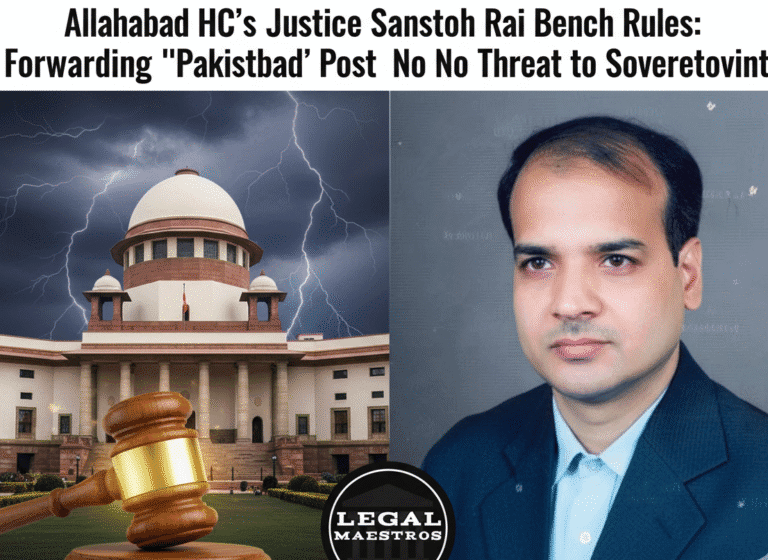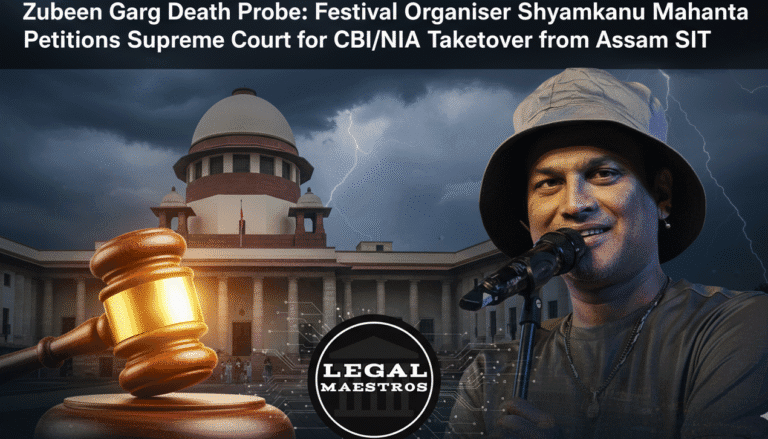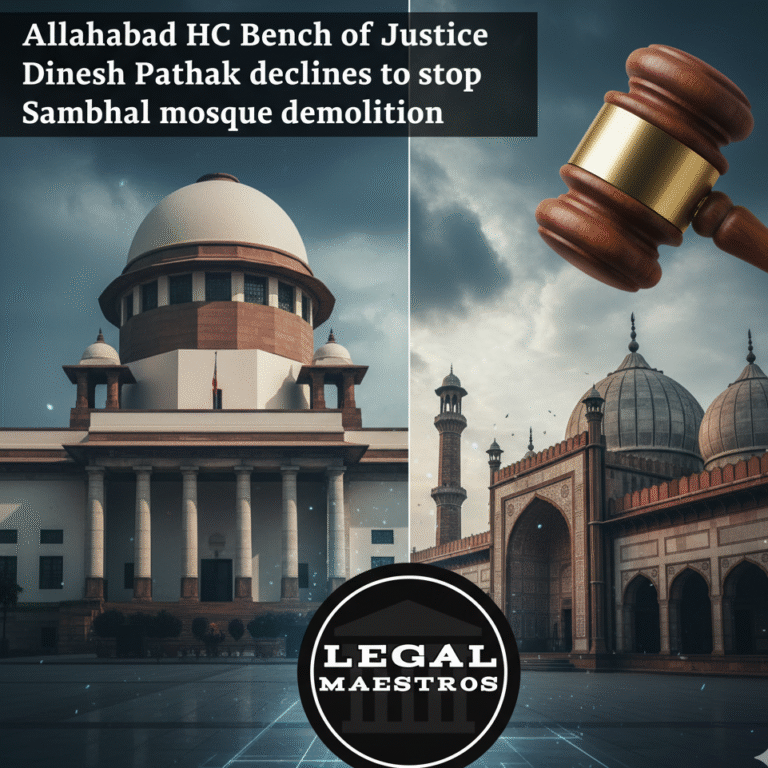
The recent attack on the Chief minister of Delhi, Rekha Gupta during a public hearing (Jan Sunwai) has brought a serious spotlight on a new and momentous legislation in India: the Bharatiya Nyaya Sanhita (BNS). The case of attempted murder against the accused, Rajesh Sakriya Khimjibhai, under BNS Section 109(1) begs the question concerning the interpretation of the law suspected of the criminal predisposition of the accused to murder a fellow citizen and whether this law has been used judiciously to counter exemplify support to a fellow citizen as considered by law.
The purpose of this paper is to simplify the legal points of the given case, to deconstruct the charges brought against this individual and the law that supports them, and how the future might play out in this highly publicized court case.
What is Bharatiya Nyaya Sanhita (BNS)?
Let us get some idea of the law in the case before delving into the particulars of the case. The Bharatiya Nyaya Sanhita (BNS) is a new criminal code which has replaced the former Indian Penal Code (IPC). This is among a series of big changes to India justice system. The BNS is an initiative through which the legal framework is modernized and gets more responsive to the contemporary challenges.
For any queries or to publish an article or post or advertisement on our platform, do call at +91 6377460764 or email us at contact@legalmaestros.com.
Another major aspect of the new law that concerns serious crimes. Similar to the IPC, the BNS is a document that stipulates different kinds of crime and the corresponding <span id=”sac-omx0192978936reg-omx0250978936bconlyhighb quasi-punishments of them. The guiding principles of the criminal law, like the necessity of specifically intending the crime (known as a mental element of crime– mens rea) and performing the act (known as the act of the crime, actus reus) are the ones that are still at the core of the new code.
Now we can take apart the components of this offense, as they are outlines in BNS Section 109(1):
- Intention or knowledge: A criminal must have forms a certain intent to kill, or be aware of the possible death consequences of his/her actions. Here police and the intelligence agencies are finding out the background of the accused, his reasons and past behavior to prove the intent. That the accused is alleged to have done a recce of the CM residence would be an important piece of evidence on the part of the prosecution, as this would indicate a planned and intentional offence.
- The very Act: The accused has to have committed an act of making a precise step towards committing the offence. Planning or just thinking about it is not sufficient The alleged act of slapping the CM, pulling her hair and attempting to push her to the ground is a clear evidence of an overt act that goes beyond preparation.
- Failure to Cause Death: Offenses to this exist where the intended victim is not killed. Failure to prove death by the CM as a result of her injuries would have been murder under an alternative section of the BNS. The idea of attempted murder is brought about by the fact that she was injured yet she survived.
According to the police, the CM had sustained injuries to her head, shoulders and hands. The PWD minister of Delhi also added that the attack was life threatening. The prosecution will use these details to advocate that the actions taken by the accused, regardless of them not having been actually successful, could have resulted in a death. Force used and targeting certain vital parts of the body are some of the factors that courts take into consideration in determining whether there was intent to kill.
The processes of the Law: the Arrest to the Trial.
The arrest of the suspect in the case, Rajesh Sakriya, is only the initial stage in a very tedious legal process. A simplified look at the legal process that is to follow:
For any queries or to publish an article or post or advertisement on our platform, do call at +91 6377460764 or email us at contact@legalmaestros.com.
- FIR and Arrest: First Information Report (FIR), under BNS 109(1) has been registered by the Delhi Police. This is the de jure beginning of the criminal investigation. The accused have been arrested and their information is under verification.
- Police Remand: The accused was taken on five days police remand. This is a time when the police can question him and obtain more information and proofs. It enables them to see his reason, whether he was collaborating with others or he was alone in the crime and gather additional evidence such as phone records and CCTV recording.
- Investigation: The investigation will be done as a combined project between the Delhi Police and the Intelligence Bureau. They will examine the past of the accused, the assertions he makes about his motive (which he purported to relate to a Supreme Court order on stray dogs) and the movements of the accused before the attack. They will also include first hand testimonies during the Jan Sunwai.
- Then, there is the element of chargesheet, that is, after investigation, police will file a chargesheet (which contains all the evidence) in court. In the chargesheet, the person will be accused officially of the crimes.
- Trial: This will be followed by trial of the case in a Court of Session, as per the BNS. The prosecution will use the evidence and arguments to establish the guilt of the accused in the course of trial. The accused will get a chance to enter his defense, through his lawyers.
- Punishment: The punishment in case of conviction under Section 109(1) could be imprisonment up to a period of ten years plus a fine. In case the act has resulted in some level of hurt (this was the case here), the punishment can be made up to a life imprisonment.
Why is this Case so important?
This case does not simply involve a criminal act but it has a bigger legal and social implication.
- Safety of Public Figures: The attack on a Chief Minister presents the significance of a stringent security and law system surrounding the safety of the public figures. As much as a Jan Sunwai is supposed to be an open court, it is a risky endeavour. The law makes sure that any assault to such a person is viewed with high seriousness.
- The test case of the New Law: It is one of the initial high profile trials by the Bharatiya Nyaya Sanhita. What will be practically a key test of the new law and how effective it is will be the manner in which the case is handled, starting with the police investigation up to the judgment of the court. It will be used to set a precedent that will be available in the future cases and also demonstrate the practical application of the new legal system.
- The case supports the concept of the rule of law. It demonstrates that even high official is not above the law, and his brutal act against a person will be followed by an iron law decision. It gives out the message that this kind of action will not be tolerated in a democratic society.
In sum, the attack on CM Rekha Gupta is more than news. It is a practical criminal case which is testing the new Bharatiya Nyaya Sanhita. The most decisive of the elements in the case brought by the prosecution will be the establishment of the intention to kill under BNS Section 109(1). As the judicial process takes its course, not only the future of the accused will be established but an important insight shall be provided as to how the new legal system of India functions.




